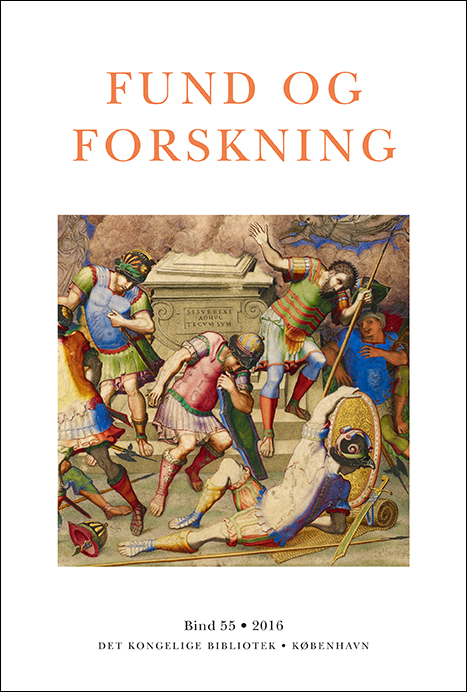En spionsag i 1930rnes København
DOI:
https://doi.org/10.7146/fof.v55i0.118919Resumé
Niels Erik Rosenfeldt & Julie Birkedal Riisbro: Espionage in Copenhagen in the 1930s
Based on comprehensive source material from Denmark, Germany and the UK in particular, this article sheds new light on a major spy case which was disclosed in 1935 in Copenhagen. The police got on the track of the case in mid-February of that year, when one of the ringleaders, the American communist George Mink, assaulted a young Danish woman in his flat at Elbagade 14 on Amager, where the spies had one of their main bases. In the weeks that followed, a number of foreigners and Danes suspected of involvement in communist espionage on Danish soil but largely directed at Nazi Germany were arrested. Most of them though were released a few months later. However, in July 1935, George Mink and his closest accomplice, the Soviet military intelligence service’s ‘illegal resident’ in Copenhagen, Aleksandr Ulanovskij, otherwise known as Nicholas Sherman, were sentenced by the High Court to a prison term of 18 months, first and foremost for espionage conducted on behalf of a foreign power.
The article starts with a brief description of the various and not always fully reliable versions of the story which have previously been in circulation, and then presents the picture that now begins to emerge of what initially happened that February. To further clarify the spy affair, the backgrounds of the principal characters are described. This raises the question: How much was really known at the time? In other words: What became public knowledge based on the more or less rumour-like information which made it into the newspaper columns? And how much concrete information did the Danish authorities manage to gather back then about the identities and activities of the agents? The following sections take stock of how much we know today about the breadth and fields of contact of the espionage affair. They look, among other things, at the connections to Soviet espionage in Finland, France, the UK and the United States. However, on the basis of a previously unused source, special attention is given to the contacts with and the reaction in the key country Germany. Finally, it is pointed out how the Danish police – without knowing whom they had got hold of – in fact detained three leading representatives of the Soviet military intelligence service in addition to the convicted persons. All three, whom the police only knew by their cover names, had been or were still ‘illegal residents’ in Germany. The police action therefore caused considerable consternation in Moscow, and the matter was quickly brought to Stalin’s attention. Shortly afterwards, the head of the Soviet military intelligence service, Jan Berzin, was dismissed from his post as a direct result of the affair in Denmark. All this only became known more than half a century later, but serves to underline the international scope of the Copenhagen spy affair.


